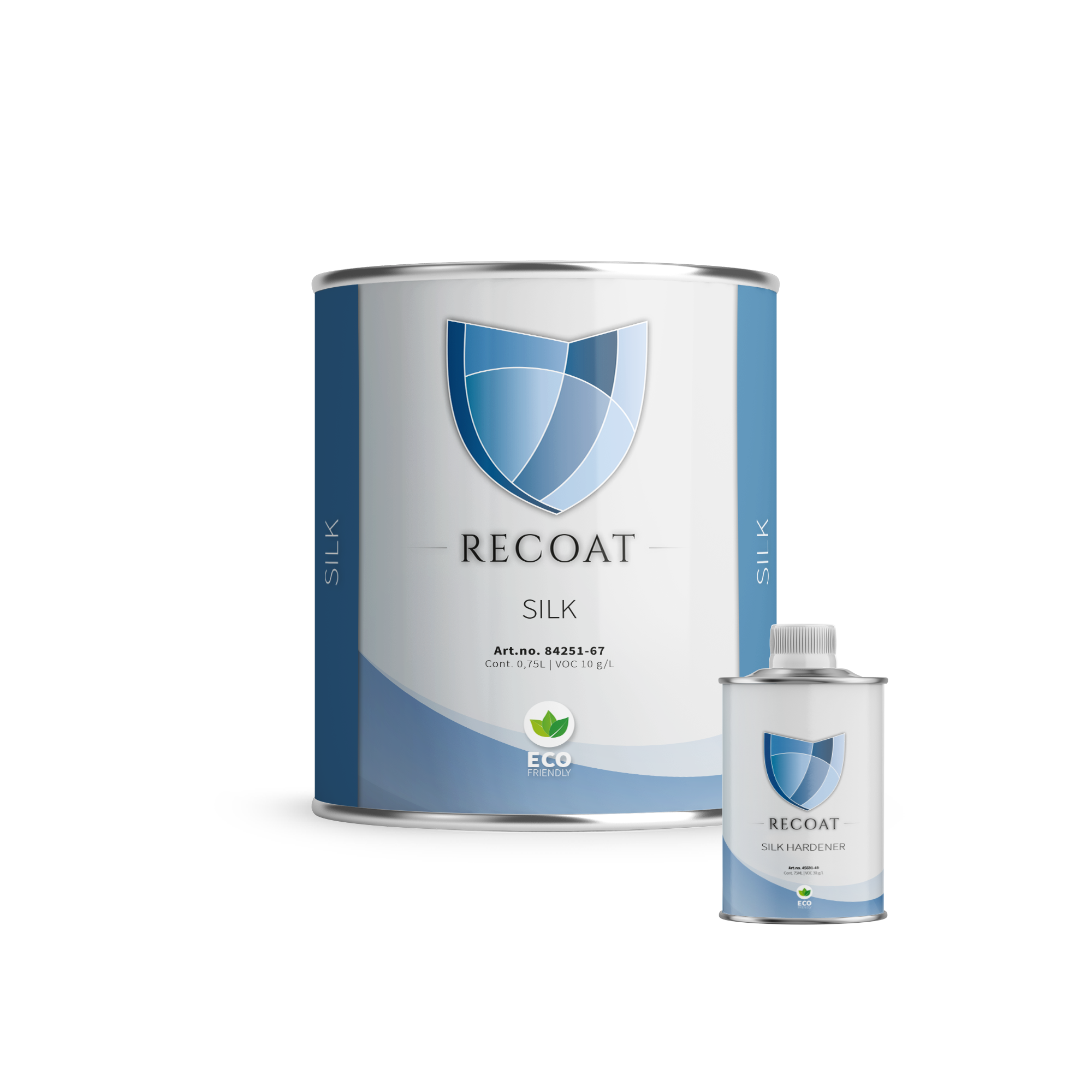Description
Recoat Silk is a highly durable, water-based, non-yellowing, satin gloss 2k coating.
The coating is suitable for protecting various surfaces that are frequently touched by hand and can be used both indoors and outdoors.
Recoat Silk is resistant to skin oils.
By protecting the surface with Silk, you will have less problems with dirt adhesion, which can reduce the cleaning frequency.
Recoat Silk has excellent adhesion, flow, high efficiency, and is very tough, scratch- and wear-resistant. The coating has a satin gloss appearance and is only available in transparent.
Pre-treatment depends on the substrate and situation, and can be done with Recoat Multi Primer or Recoat Stix.
Application area
Recoat Silk is applicable to almost all substrates such as wooden, plastic, and metal surfaces.
It is advised to always first perform a test on the respective substrate.
Examples of substrates include counters, display cases, and doors.
It is also suitable for facade cladding where a luxurious appearance is desired.



